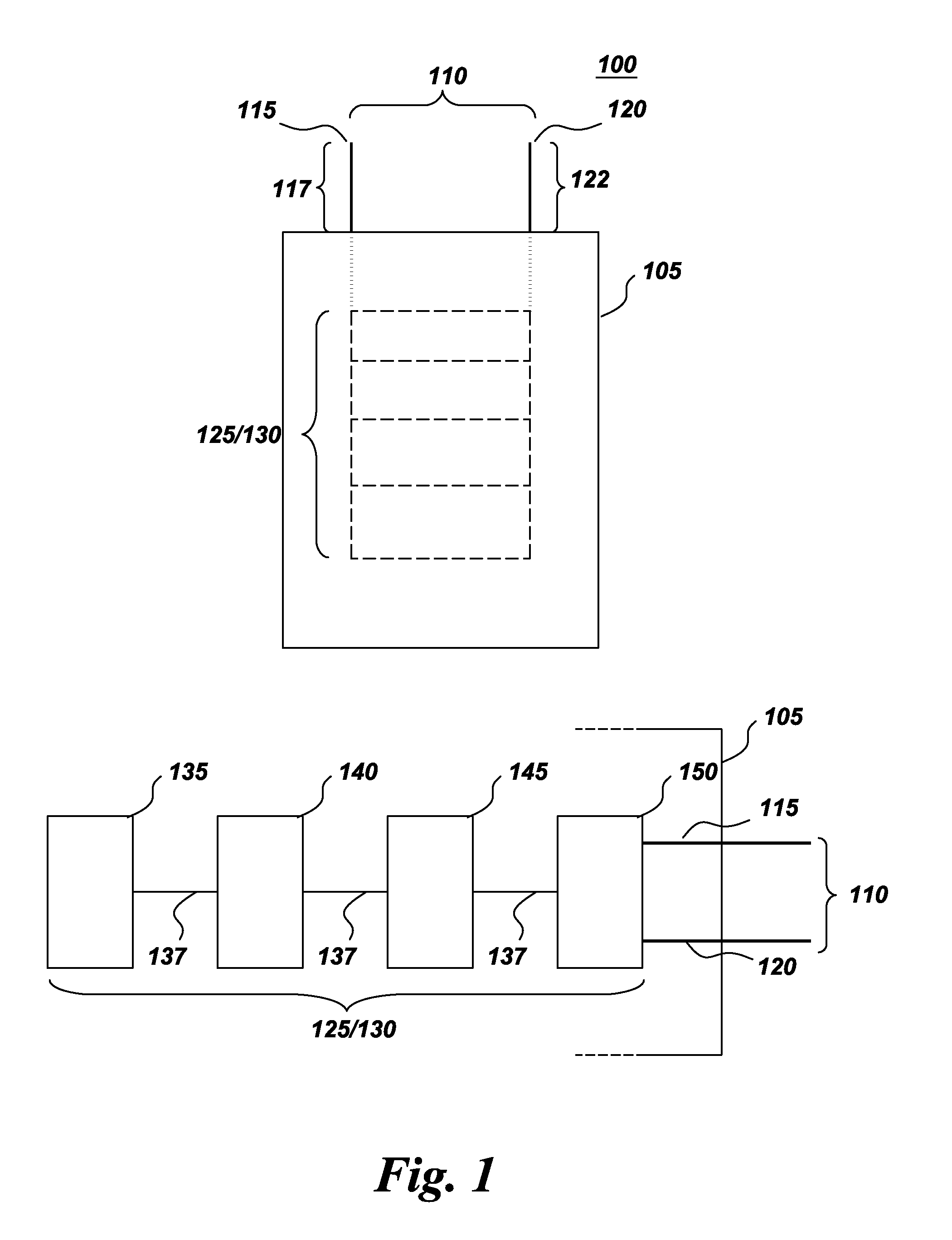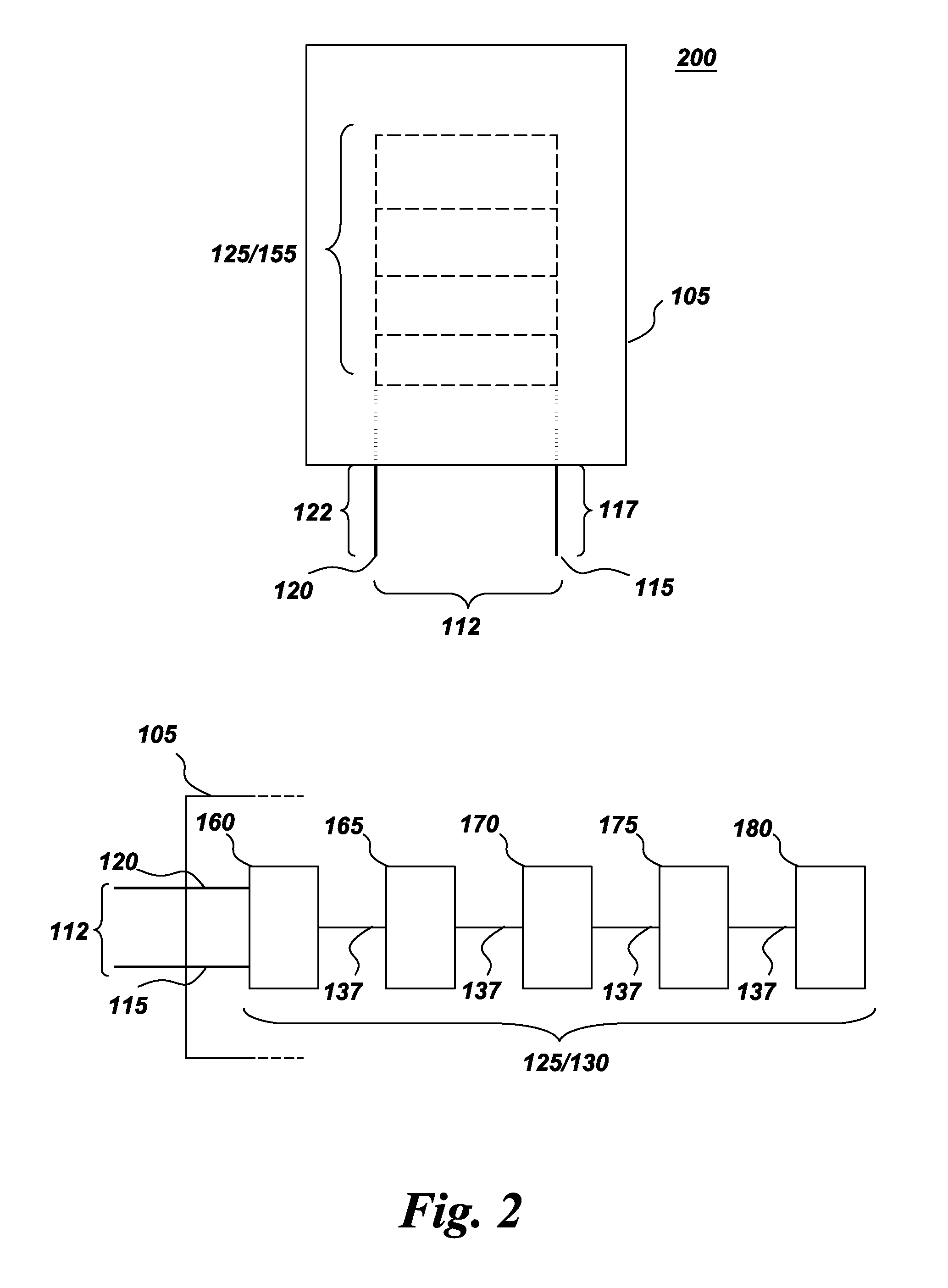Contactless underwater communication device
a communication device and contactless technology, applied in the field of underwater communication, can solve the problems of slow speed of acoustic energy propagation in water, interference with the use of acoustic techniques, and limit the data transmission rate of acoustic subsea communication system,
- Summary
- Abstract
- Description
- Claims
- Application Information
AI Technical Summary
Problems solved by technology
Method used
Image
Examples
experiment 1
[0045]A preliminary investigation was carried out in an effort to model electric field signal attenuation in water as a function of the signal frequency and the distance between a transmitting device and a corresponding receiving device. FIG. 4. presents the calculated electric field attenuation for a model system comprising an electric field signal transmitting device and electric field signal receiving device immersed in water, and is based on Maxwell's electric current wave equation. The Y-axis 410 represents the calculated magnitude of the electric field attenuation in response to changing electric field signal frequency (X-axis 412). The distance between the communication devices was varied to obtain the family of frequency response curves shown: curve 414 (0.25 meters), curve 416 (0.5 meters), curve 418 (1 meter), curve 420 (2 meters), and curve 422 (4 meters). The calculated data indicate that a relatively steep loss in electric field signal strength (roll-off) occurs with in...
experiment 2
[0053]A transmitting device of the present invention configured as in Experiment 1 was entirely submerged in the test tank used for Experiment 1 at depths ranging from about 17 inches below the surface to about 183 inches below the surface while maintaining a more or less constant lateral distance from the receiving device at the surface. The receptive element of receiving device comprised two bronze electrodes extending downward below the surface of the water of the test tank.
[0054]The transmitting device was programmed to a transmit the 8 non-data carrying pilot tones used in Experiment 1, and in addition, 2 data carrying signals. The data carrying signals were created by direct sequence spread spectrum (DSSS) digital modulation of two pilot tones (Signal #1 a 50 KHz I-Q modulated 504 KHz pilot tone, and Signal #2 a 100 KHz I-Q modulated 1.91 MHz pilot tone) and transmitted together with the 8 non-data carrying pilot tones employed in Experiment 1 from the transmitting device to t...
experiment 3
[0055]A transmitting device of the present invention configured as in Experiment 1 was submerged in the test tank used for Experiment 1 at a depth of about 1 meter. A receiving device configured as in Experiment 2 was likewise submerged in the test tank at a depth of 1 meter. The transmitting device was programmed to transmit the 8 non-data carrying pilot tones used in Experiments 1 and 2. The signal contact distances between the transmitting device and the receiving device were varied from about 16 inches to about 74 inches (16″, 26″, 50″, and 74″) at which distances each of the 8 pilot tones was clearly discernable from noise. At greater distances, (102″, 122″ and 146″) the pilot tones were still discernable but signal strength was erratic. It is believed that at these greater signal contact distances, signal strength may have been affected by the proximity of the radiative element and receptive element to the bottom of the test tank. It is noteworthy that such effects can be over...
PUM
 Login to View More
Login to View More Abstract
Description
Claims
Application Information
 Login to View More
Login to View More - R&D
- Intellectual Property
- Life Sciences
- Materials
- Tech Scout
- Unparalleled Data Quality
- Higher Quality Content
- 60% Fewer Hallucinations
Browse by: Latest US Patents, China's latest patents, Technical Efficacy Thesaurus, Application Domain, Technology Topic, Popular Technical Reports.
© 2025 PatSnap. All rights reserved.Legal|Privacy policy|Modern Slavery Act Transparency Statement|Sitemap|About US| Contact US: help@patsnap.com



